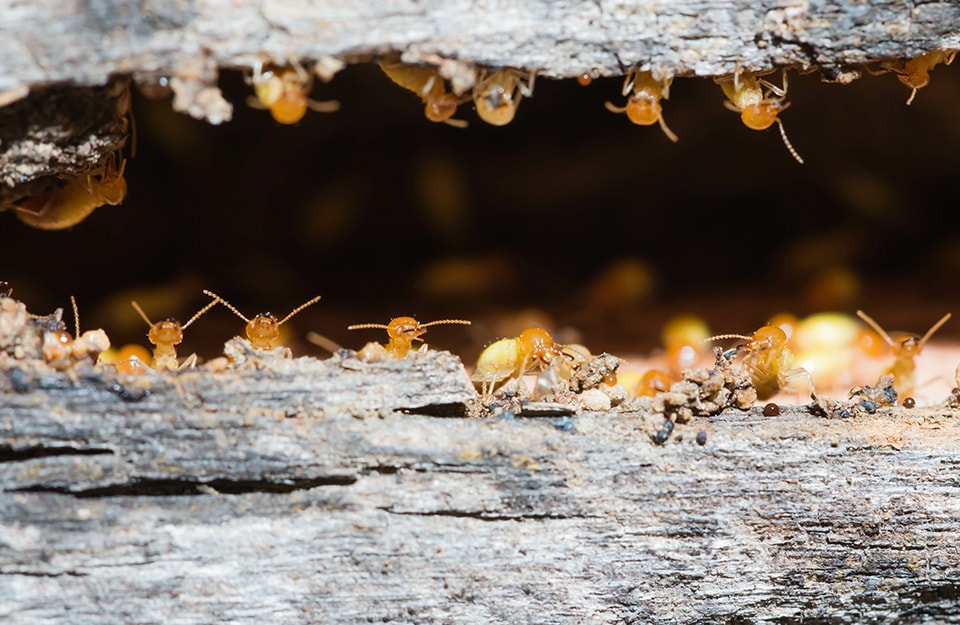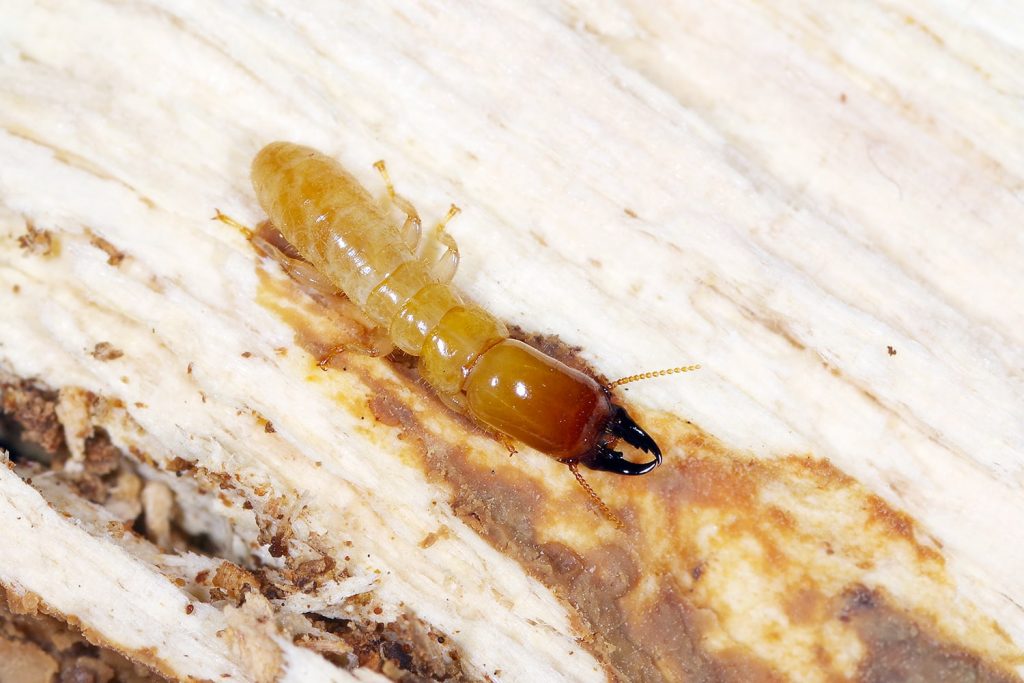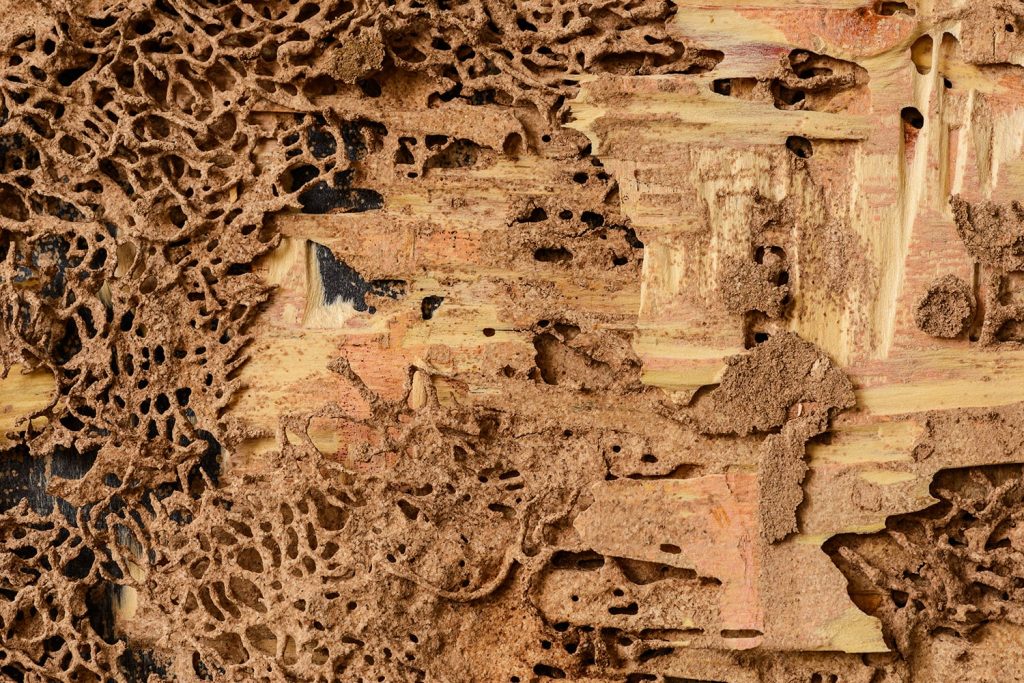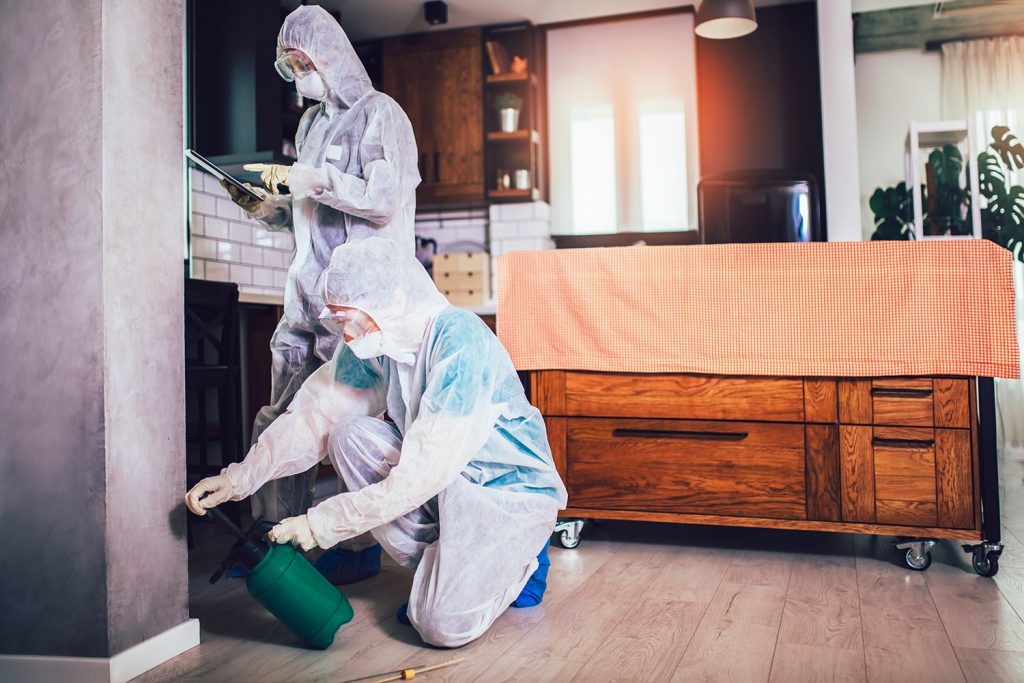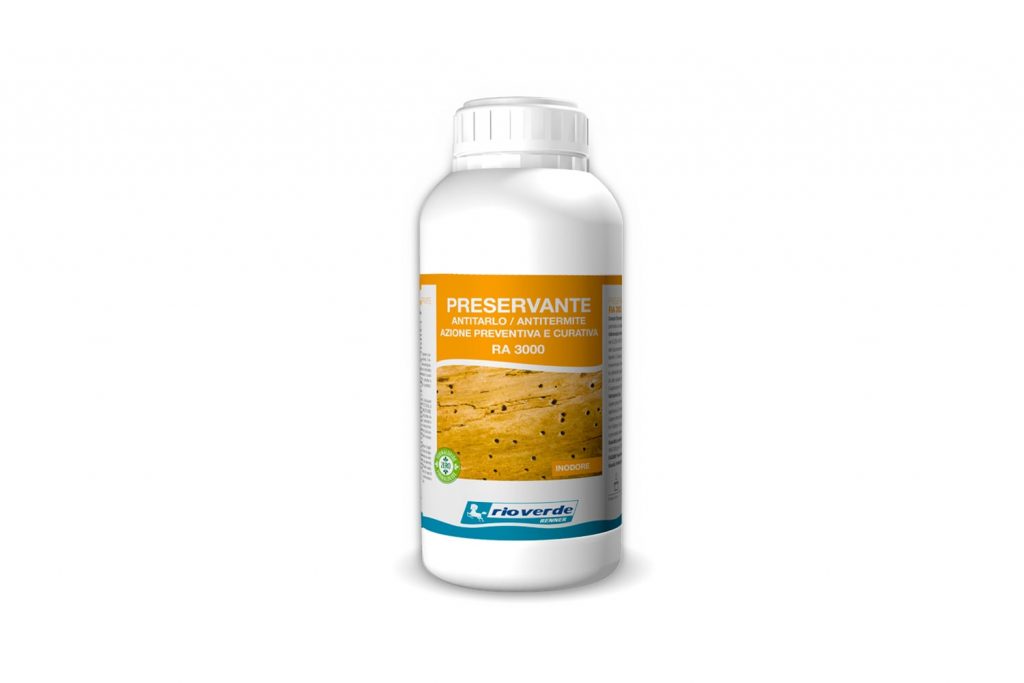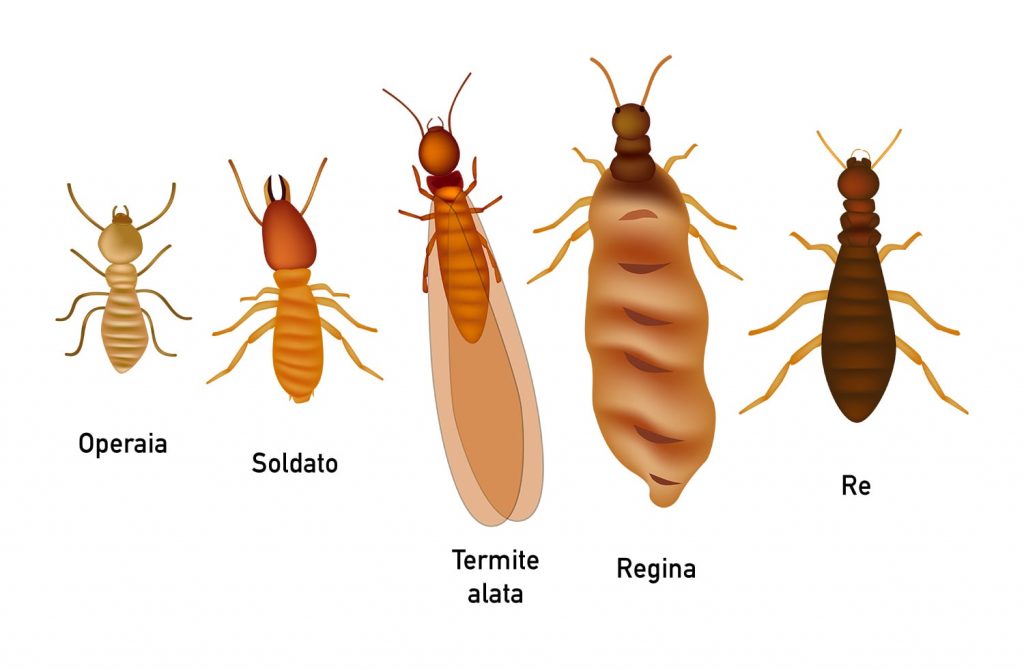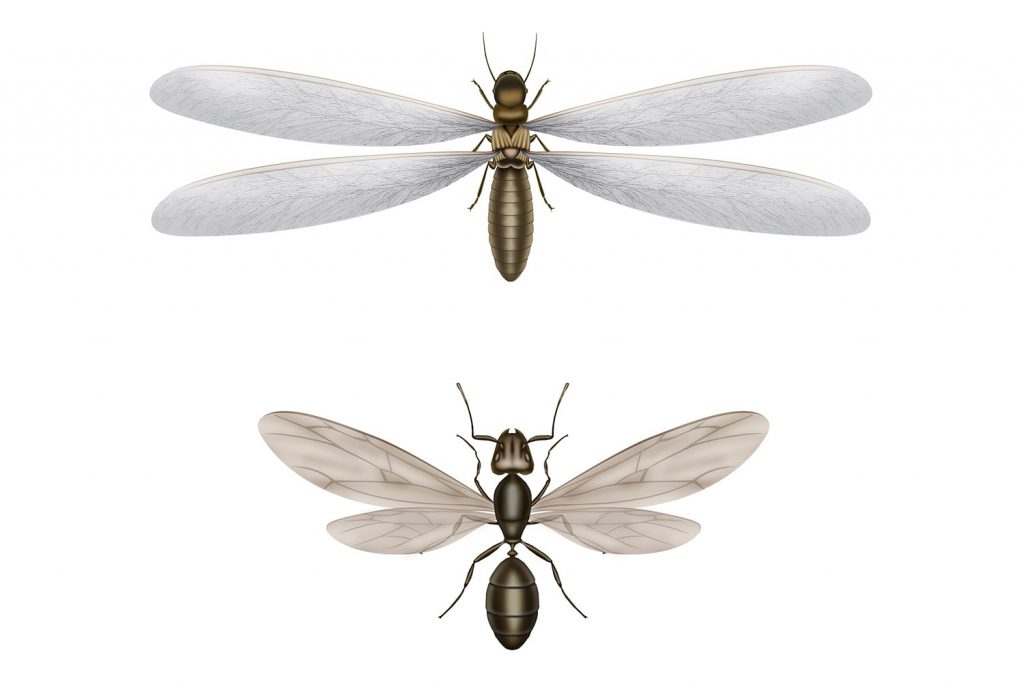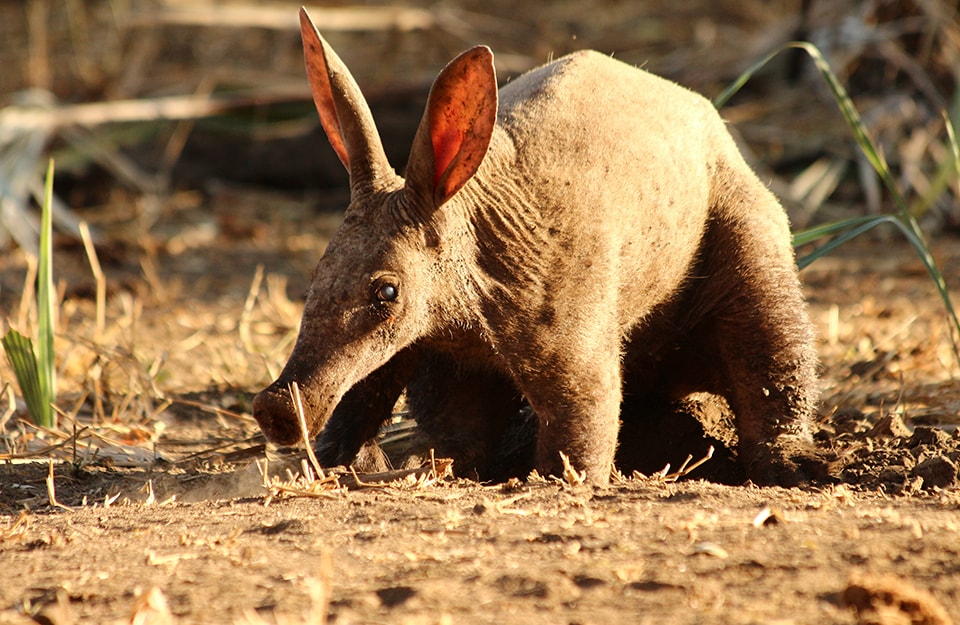Index
- Are wood termites also widespread in Italy?
- How to tell if there is a wood termite infestation?
- How to eliminate them?
- The anti-shrinkage treatment
- Who to call in the event of a termite infestation?
- What are termites?
- The social structure of termites
- How to recognise termites from woodworms and ants?
- Who eats termites?
- A gallery of termite images
They are as important to the ecosystem as they are harmful to man-made structures. Incredibly voracious, the wood termites are among the most destructive pests of all. Widespread mainly in tropical areas, some species are also present in Italy. And they are more insidious than woodworms, as they almost never leave any obvious signs of their presence.
Let us therefore try to understand how to recognise them and, if so, what to do;
Are wood termites also widespread in Italy?
Although they can mostly be found in tropical countries, even in Italy there are some species of termites.
They normally live in urbanised environments and feed mainly on old industrial and forestry plants. However, they do not disdain gardens or wooden structures of houses, churches and monuments. They are also fond of paper material in libraries and archives;
A high concentration of moisture is the basic requirement for an attack by termites to occur;
Two species are found in our country:
- yellow-necked termites (Kalotermes flavicollis): they are widespread throughout the Mediterranean, but also in France and Germany. Colonies consist of around 1000/2000 individuals. They live mainly inside dying trees, but are capable of attacking healthy plants or house structures. Their body is blackish-brown with a yellow area on the back;
- lucifuge termite (Reticulitermes lucifugus): it is the most common in Italy. It can also be found at great altitudes. It lives in very large colonies, which can number up to one million individuals;
The lucifugous termite prefers basements and damp rooms, and its nests are usually in contact with the ground. Like the yellow-necked termite, it attacks dying or decaying plants, but does not disdain the wooden structures of houses. Adults of this species are blackish, while soldier termites are yellowish-white;
How to tell if there is a wood termite infestation?
There are some definite signs. Let’s see what they are;
- Tooltip: this is one of the few signs that makes the presence of termites visible to the outside world.
Usually in spring or summer, winged and sexually mature individuals fly out of the nest. After flying around the colony, they land, lose their wings and look for a mate to form a new colony; - Hollow wood: termites consume timber by eating from the inside out. They leave behind only a thin exterior patina of wood or paint;
To tell if the wood is infested, simply tap it to test its texture. There is also the so-called ‘imprint test’: if you press your finger on the wood surface and the mark remains, it means that the underlying material has been worn away; - Doors, sashes and fixtures that are difficult to close: termites release their droppings into the wood, which retain moisture and thus tend to swell the infested element.
- Cracks: If you notice cracks or splits in the wood, it is important to check their origin.
Wood termites: how to eliminate them?
There are several techniques that can be used to eliminate termites but it is absolutely necessary to consult professionals.
There are sites that suggest do-it-yourself methods, but you cannot be 100% certain that they are effective. Sometimes products are also recommended that may harm the health of people or pets, so it is best to avoid them;
There are two most common modes of action:
- disinfestation: specific pest control products are used. These are insecticides that are injected into the infested wooden structure;
- traps or chemical baits: food baits can also be used to hit the colony and slowly poison it until the ‘royals’ are hit and then the colony dies out. This technique is widely used because nests can often be deep in the ground, even hundreds of metres from the infested area;
The termite treatment: why is it important?
To to prevent termite infestation, it is first necessary to focus on constant cleaning and disinfection of the house. Check the wooden elements and plants in the garden regularly. Make sure there are no leaking pipes and avoid damp areas in the house as much as possible;
Then there are the treatments, useful both to ward off an initial infestation and to prevent termites from returning after a pest control.
The anti-woodworm/anthelmite preservative RA3000 from Renner Italia’s Rio Verde range can be applied to everything in wood: furniture, garden furniture, door and window frames, doors, cladding, rafters, matchboarding, balconies, cottages, fences, gazebos.
It is a product that prevents termite (and woodworm) attacks by penetrating deeply thanks to its stabilised micro emulsion technology;
It should be applied at least 2 or 3 times, leaves no residue, is easy to use and comply with European biocide legislation.
In addition to preventing, it can also eliminate termites, should one be able to find their nest;
Who to call in the event of a termite infestation?
If it is too late and the infestation has reached guarded levels, turn to professionals. There are them all over Italy;
Just do a quick web search, or rely on word of mouth. In many cases, companies also offer free quotations. Technicians will come and do a overview to determine whether it is indeed termites and at what stage of progress the infestation is. They will propose the most effective solutions to solve the problem;
What are termites?
Termites are xilophages, i.e., they feed on wood, like woodworms. Unlike the latter, however, they are not beetles, but isoptera.
The order includes more than 2000 species, mainly found in tropical regions. They are social animals, whose colonies are divided into ‘castes’;
These insects play a key role in the world’s ecosystem. With their robust mandibles, capable of breaking and chopping wood, they they dispose of one third of all residual matter produced annually by plants in tropical forests. In this way they promote natural turnover, make the soil fertile and make room for new organisms.
The social structure of termites
- King and royalty: they are the founders of the colony and represent the fertile caste (worker termites and soldier termites are sterile). They have developed eyes. Females, which can be much larger than males, have a belly full of eggs. In some species, queens can live for almost a century. They are born with wings and, once they reach maturity, leave the colony of origin in search of a new nest;
- Women workers: they are the most numerous in the colony. They have no eyes and no wings. They have several tasks: procuring food, building nests and digging tunnels. They are the ones that cause most damage to wooden structures;
- Soldier Termites: they defend the colony. They have large mandibles and are able to release toxic fluids with their bites. Some have a more developed head that acts as a ‘shield’;
- Winged Hermits: these are the future queens and kings, who will leave their home colony to found their own. They have wings and are often mistaken for winged ants;
How to recognise termites from woodworms and ants
To understand whether you have a termite infestation, woodworm infestation or whether it is simply flying ants, you need to pay close attention;
Woodworms are recognisable by the flicker holes and rosume (very fine dust-like sawdust) that they leave on furniture, objects, beams or structures. Termites, on the other hand, they do not leave any signals of any kind outside the infested element or plant.
If you notice the presence of winged insects that resemble ants, you must take a good look at their shape and colour. Termites are paler than black ants and their bodies are divided into two sections (that of ants is in three sections). In the picture above, at the top is a termite, at the bottom an ant;
Who eats termites?
A ruthless killer of wood termites exists in nature: it is the aardvark (scientific name Orycteropus afer);
It is a mammal of African origin that belongs to the afrotheri, the same as elephants. Like the latter, it has a kind of trunk, however much shorter and resembling the snout of a pig. In fact, it is commonly called ground pig, also because it is about the size of a piglet.
It is a night animal, which feeds almost exclusively on termites and ants, which it digs up using the tools. Through its long, slimy tongue it then captures prey. It can feed on tens of thousands of insects a day;
A gallery of termite images


